Sleeping Beauty 2011
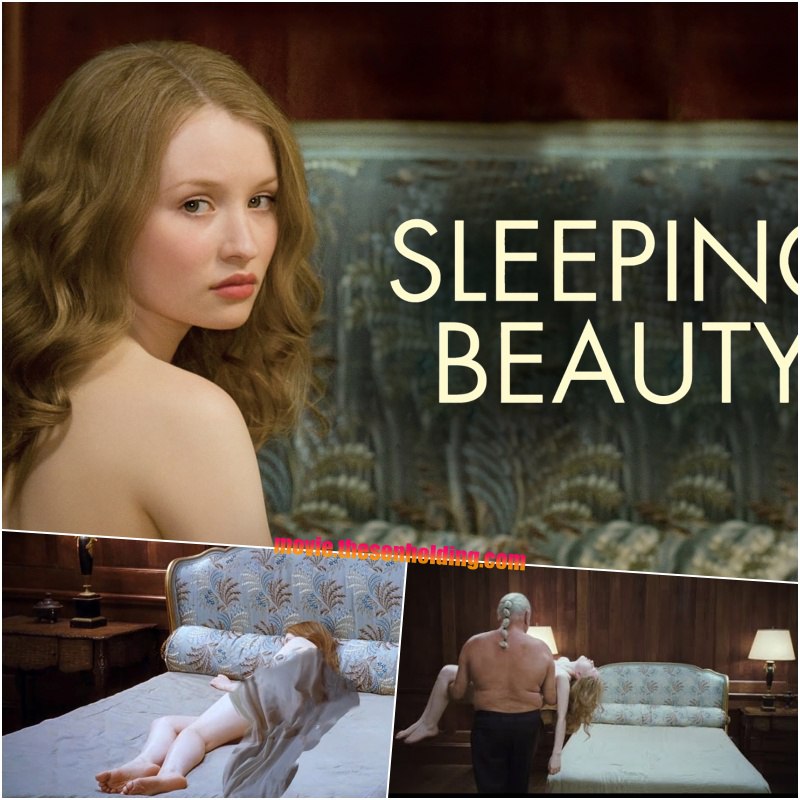
Introduction to the Film Sleeping Beauty (2011) – Julia Leigh’s Bold Artistic Vision
Sleeping Beauty (2011) is an Australian independent art film, marking the directorial debut of novelist and filmmaker Julia Leigh. Starring Emily Browning in the lead role, the film is a daring and controversial exploration of desire, power, and human passivity in a modern society. Inspired by the fairy tale “Sleeping Beauty” but reimagined in a starkly original context, Sleeping Beauty is not a traditional fairy tale but a profound, haunting, and symbolic psychological drama. Premiering at the 2011 Cannes Film Festival, the film sparked widespread discussion among critics and audiences for its bold approach and enigmatic storytelling.
Basic Information
- Director: Julia Leigh
- Screenplay: Julia Leigh
- Main Cast:
- Emily Browning as Lucy
- Rachael Blake as Clara
- Ewen Leslie as Birdmann
- Peter Carroll as Man 1
- Genre: Psychological, Art, Drama
- Runtime: 101 minutes
- Country: Australia
- Language: English
- Release Date: May 14, 2011 (Cannes Film Festival); June 23, 2011 (Australia)
- Production Companies: Magic Films, Screen Australia, Big Ears Productions
- Ratings:
- IMDb: 5.3/10
- Rotten Tomatoes: 48% (based on critic reviews)
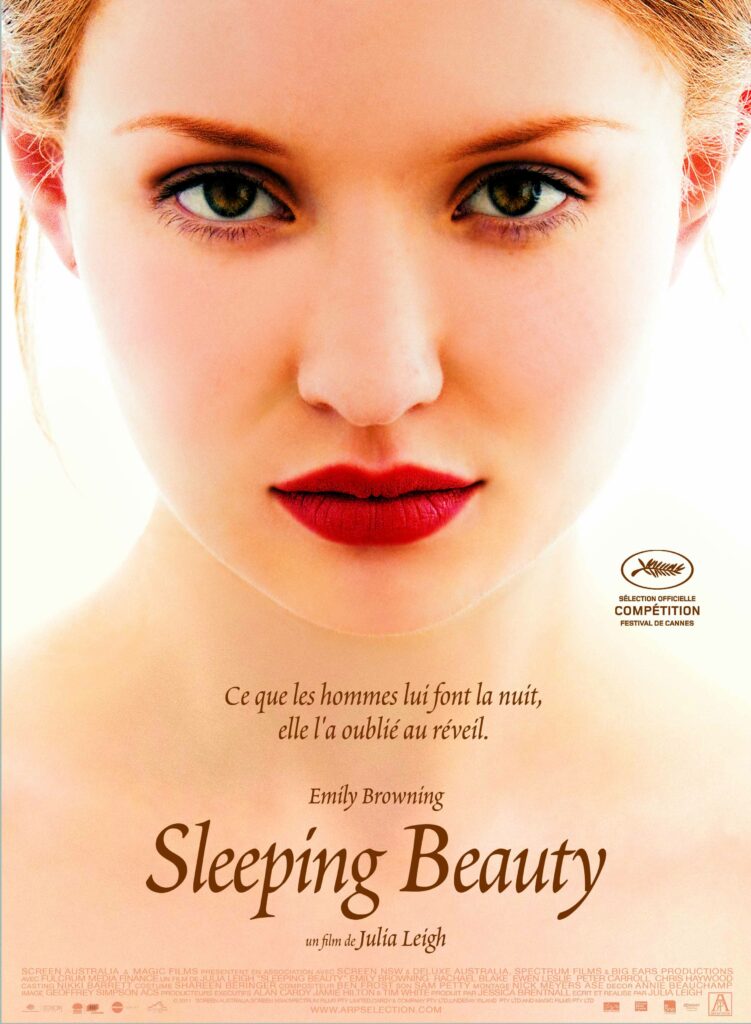
Plot Summary
Sleeping Beauty centers on Lucy, a young university student living in Sydney, Australia. Lucy is an enigmatic figure, juggling multiple part-time jobs to make ends meet, from waitressing at a café to working as an office clerk and participating in medical trials. Her life seems aimless, drifting through superficial relationships and a detached emotional state. One day, Lucy responds to a mysterious job advertisement and is introduced by Clara, a poised middle-aged woman, to an unusual role: becoming a “sleeping beauty” for wealthy male clients.
In this role, Lucy is sedated and sleeps while clients—older, affluent men—interact with her body under strict rules that prohibit sexual intercourse. The film’s scenes focus on Lucy’s passivity, as she lies motionless, becoming the object of others’ desires and fantasies. The narrative offers little explicit explanation of Lucy’s motivations or those of the characters around her, instead inviting viewers to reflect on the meaning of freedom, control, and ethical boundaries.
Rather than following a conventional plot, Sleeping Beauty unfolds as a series of images and moments, designed to evoke emotion and provoke questions about the nature of desire, power, and consent in contemporary society. The film concludes with a haunting scene, leaving ample room for audiences to interpret its meaning.
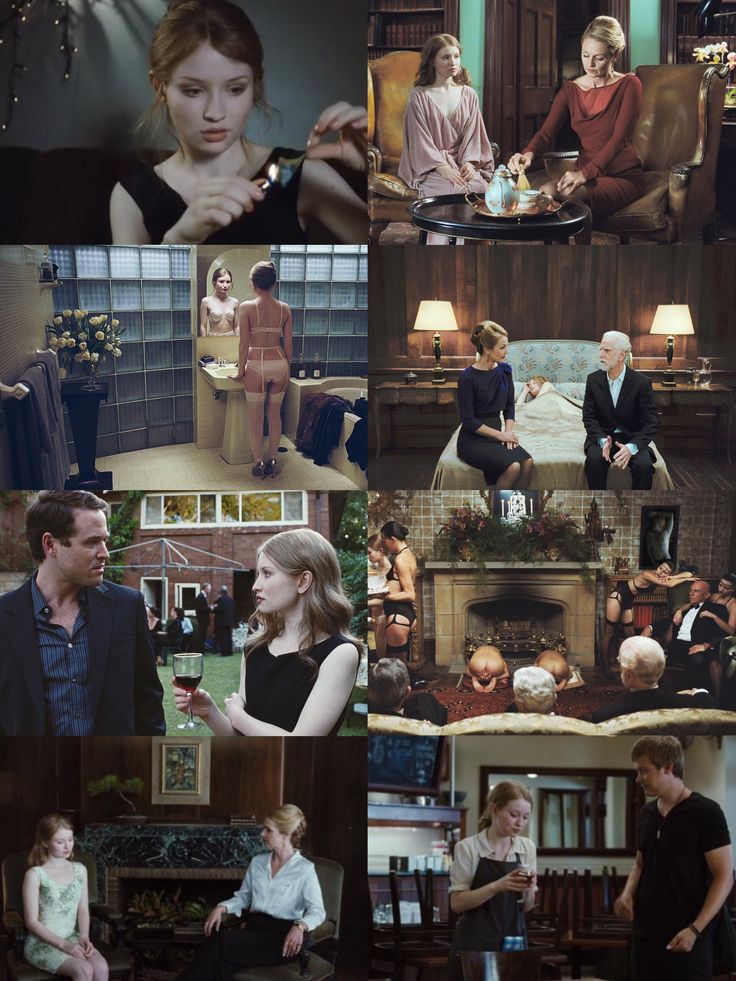
Production Background
Sleeping Beauty is Julia Leigh’s first feature film, following her success as a novelist with The Hunter (1999). Developed with support from Screen Australia, the film was selected to compete for the Palme d’Or at the 2011 Cannes Film Festival, a significant achievement for a debut director. Leigh drew inspiration from various sources, including Charles Perrault’s “Sleeping Beauty,” Yasunari Kawabata’s novel The House of the Sleeping Beauties, and the works of director Luis Buñuel, but crafted a wholly unique narrative.
Filmed in Sydney with a minimalist visual style, the movie employs cold lighting and modern settings to create a sense of detachment, mirroring the protagonist’s emotional state. Emily Browning, known for her role in Lemony Snicket’s A Series of Unfortunate Events (2004), was cast as Lucy after impressing Leigh with her boldness and ability to convey complex emotions.

Highlights of the Film
- Emily Browning’s Performance:
Emily Browning delivers a captivating and fearless performance as Lucy. She portrays a character who is both vulnerable and enigmatic, with her silence and expressive eyes conveying more than dialogue. Browning’s commitment to the role, especially in sensitive scenes, brings depth to the character’s psychological complexity. - Visual Style and Direction:
Julia Leigh employs a minimalist visual approach, with carefully composed frames and muted colors that evoke a cold, distant atmosphere. Long, quiet shots, combined with minimal background music, heighten the sense of unease and force viewers to confront the onscreen events directly. - Profound and Controversial Themes:
Sleeping Beauty explores themes of passivity, power, desire, and consent. The film raises questions about how much control one has over their body and mind in a society marked by power and financial inequalities. Its sensitive scenes and provocative content have made it a focal point for debates about ethics and art. - Symbolism and Ambiguity:
The film avoids clear answers, instead using imagery and symbolism to provoke thought. The title Sleeping Beauty refers not only to Lucy’s “sleeping” state but also serves as a commentary on human passivity in the face of societal and personal pressures.
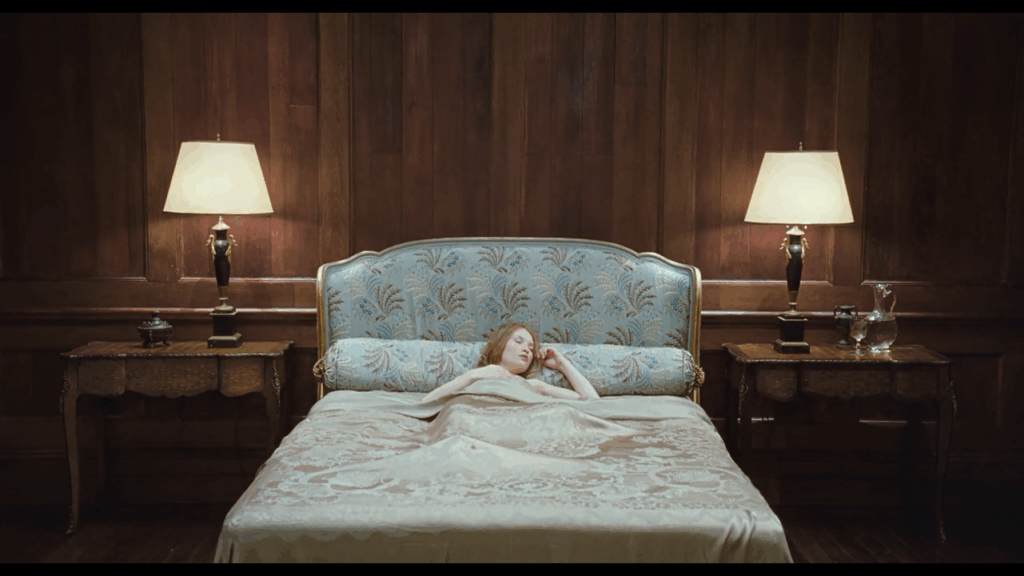
Significance and Impact
Sleeping Beauty is a bold work of art that challenges viewers to step outside their comfort zones and grapple with difficult questions about human nature and society. While it received mixed reviews—some praised its creativity and depth, while others found it too ambiguous or unsettling—the film has left a lasting mark on the independent art film genre.
Often compared to the works of directors like Michael Haneke or Lars von Trier for its uncompromising approach and focus on psychology, Sleeping Beauty has helped elevate Australian cinema on the global stage. It also paved the way for Julia Leigh’s continued creative career, though this remains her only feature film to date.
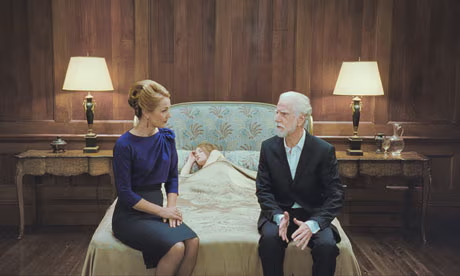
Why You Should Watch Sleeping Beauty?
- If you enjoy art films with unconventional storytelling and symbolic imagery, Sleeping Beauty is a compelling experience worth exploring.
- The film offers a unique perspective on social and psychological issues, particularly power and consent, leaving you pondering long after the credits roll.
- Emily Browning’s performance and Julia Leigh’s directorial style are highlights, especially for those who appreciate bold filmmaking.
- Note: The film contains sensitive content and may not suit all viewers, particularly those seeking straightforward narratives or light entertainment.

Where to Watch Sleeping Beauty
Currently, Sleeping Beauty (2011) is available on streaming platforms such as MUBI, Kanopy, or rental services like Amazon Prime and iTunes (depending on your region). You can also find DVD/Blu-ray editions from distributors like IFC Films for the best viewing quality.
Conclusion
Sleeping Beauty (2011) is a daring and haunting art film that challenges viewers to confront profound questions about desire, power, and passivity in the modern world. With Julia Leigh’s masterful direction, Emily Browning’s stellar performance, and a distinctive visual style, the film is a memorable work in the realm of independent cinema. If you’re ready for a cinematic journey that’s challenging yet rewarding, Sleeping Beauty is sure to leave a lasting impression.
Share your thoughts on Sleeping Beauty after watching!